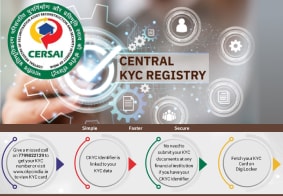CKYC Registry
-
Customer Service Contact us Service request Locate a branch
Find all the help you need
Scan the QR, get our app, and find help on your fingertips

Help CenterSupport topics, Contact us, FAQs and more
-
Login
Are you ready for an upgrade?
Login to the new experience with best features and services
-
Login
Are you ready for an upgrade?
Login to the new experience with best features and services
- Accounts
-
Deposits
IDFC FIRST Bank Deposits
View all Deposits -
Loans
IDFC FIRST Bank Loans
View all Loans - Wealth & Insure
-
Payments
IDFC FIRST Bank Payments
View all Payments -
Cards
IDFC FIRST Bank Cards
View all Cards - Blogs
- Corporate Account
-
Cash Management Services
IDFC FIRST Bank Cash Management Services
View all Cash Management Services - Supply Chain Finance
-
Corporate Lending
IDFC FIRST Bank Lending
View all -
Treasury
IDFC FIRST Bank Treasury
See more details - NBFC Financing
Support topics, Contact us, FAQs and more
- IDFC FIRST Bank Accounts
-
Savings Account
-
Corporate Salary
Account -
Senior Citizens
Savings Account -
First Power
Account -
Current Account
-
NRI Savings
Account -
TASC Institutional
Account -
Savings Account
Interest Calculator
- IDFC FIRST Bank Deposits
-
Fixed Deposit
-
Recurring Deposit
-
NRI Fixed Deposit
-
Safe Deposit Locker
-
FD Calculator
-
RD Calculator
- IDFC FIRST Bank Loans
-
Personal Loan
-
Consumer Durable
Loan -
Home Loan
-
Business Loan
-
Professional Loan
-
Education Loan
-
New Car Loan
-
Pre-owned Car Loan
-
Two Wheeler Loan
-
Pre-owned Two
Wheeler Loan -
Commercial Vehicle
Loan -
Gold Loan
-
Loan Against Property
-
Loan Against Securities
-
Easy Buy EMI card
-
Personal Loan
EMI Calculator -
Education Loan
EMI Calculator -
Home Loan
EMI Calculator -
EMI Calculator
-
Personal Loan Eligibility Calculator
- IDFC FIRST Bank Wealth & Insure
-
FIRST Select
-
FIRST Wealth
-
FIRST Private
-
Mutual Funds
-
Sovereign Gold Bond
-
Demat Account
-
Term Insurance
-
Life Insurance
-
Health Insurance
-
General Insurance
-
Bonds
-
Loan Against
Securities -
Portfolio Management
Service
- IDFC FIRST Bank Payments
-
FASTag
-
Credit Card
Bill Payments -
UPI
-
Funds Transfer
-
Forex Services
-
Pay Loan EMI
- IDFC FIRST Bank Cards
-
Ashva :
Metal Credit Card -
Mayura :
Metal Credit Card -
FIRST Millennia
Credit Card -
FIRST Classic
Credit Card -
FIRST Select
Credit Card -
FIRST Wealth
Credit Card -
FIRST WOW!
Credit Card -
Deals
-
Debit Cards
-
Co-branded Cards
-
Credit Card
EMI Calculator -
FIRST Corporate
Credit Card -
FIRST Purchase
Credit Card -
FIRST Business
Credit Card
- Premium Metal Credit Cards
-
AshvaLifestyle1% Forex₹2,999
-
MayuraLifestyleZero Forex₹5,999
-
FIRST PrivateInvite Only
- Best for travellers
-
MayuraZero ForexMetal₹5,999
-
Ashva1% ForexMetal₹2,999
-
FIRST WOW!Zero ForexTravelLifetime Free
-
FIRST SWYPTravel OffersEMI₹499
-
FIRST Select1.99% ForexLifestyleLifetime Free
-
FIRST Wealth1.5% ForexLifestyleLifetime Free
-
Club VistaraTravelLifestyle₹4,999
-
IndiGo IDFC FIRST Dual Credit CardTravelLifestyle₹4,999
- Max benefits, Free for life
-
FIRST Classic10X RewardsShoppingNever Expiring Rewards
-
FIRST Millennia10X RewardsShoppingNever Expiring Rewards
-
FIRST Select10X RewardsLifestyle1.99% Forex
-
FIRST Wealth10X RewardsLifestyle1.5% Forex
-
FIRST WOW!RewardsTravelZero Forex
-
LIC ClassicRewardsInsuranceShopping
-
LIC SelectRewardsInsuranceShopping
- Reward Multipliers
-
AshvaLifestyleMetal₹2,999
-
MayuraLifestyleZero Forex₹5,999
-
FIRST ClassicNever Expiring RewardsShoppingLifetime Free
-
FIRST MillenniaNever Expiring RewardsShoppingLifetime Free
-
FIRST SelectNever Expiring RewardsLifestyleLifetime Free
-
FIRST WealthNever Expiring RewardsLifestyleLifetime Free
- Rewards & Credit on UPI
-
FIRST Power+FuelUPI₹499
-
FIRST PowerFuelUPI₹199
-
FIRST EA₹NVirtual1% Cashback₹499
-
FIRST DigitalVirtualUPI₹199
-
IndiGo IDFC FIRST Dual Credit CardUPITravelDual cards
- Fuel and Savings
-
FIRST PowerRewardsUPI₹199
-
FIRST Power+RewardsUPI₹499
-
LIC ClassicRewardsInsuranceShopping
-
LIC SelectRewardsInsuranceShopping
- Express and Flaunt
-
AshvaMetal1% Forex₹2,999
-
MayuraMetalZero Forex₹5,999
-
FIRST SWYPEMIOfferMAX₹499
-
FIRST MillenniaRewardsShoppingLifetime Free
- FD Backed rewarding Credit Cards for all
-
FIRST EA₹NVirtualCashback₹499
-
FIRST WOW!Zero ForexTravelLifetime Free
-
CreditPro Balance TransferTransfer & SaveReduce InterestPay Smartly
- IDFC FIRST Bank NRI Forex Solutions
-
Send money to India-Wire transfer
-
Send money to India-Digitally
-
Send money abroad
-
Max Returns FD (INR)
- IDFC FIRST Bank MSME Accounts
-
Platinum Current
Account -
Gold
Current Account -
Silver Plus
Current Account -
Merchant Multiplier
Account -
Agri Multiplier
Account -
TASC Institutional
Account -
Dynamic Current
Account -
World business
Account -
First Startup
Current Account
- IDFC FIRST Bank Business Loans
-
Business Loan
-
Professional Loan
-
Loan Against Property
-
Business Loan for Women
-
Working Capital Loan
-
Construction Equipment Loan
-
Machinery Loan
-
Healthcare Equipment Loan
- IDFC FIRST Bank Business Solutions
-
Payment Solutions
-
Tax Payments
-
Doorstep Banking
-
Point of Sale (POS)
-
Escrow Accounts
-
NACH
-
Payment Gateway
-
UPI
-
Virtual Accounts
-
As per amendment in the Income Tax Rules, PAN or Aadhaar are to be mandatorily quoted for cash deposit or withdrawal aggregating to Rupees twenty lakhs or more in a FY. Please update your PAN or Aadhaar. Kindly reach out to the Bank’s contact center on 1800 10 888 or visit the nearest IDFC FIRST Bank branch for further queries.
-
-
Most Searched
Sorry!
We couldn’t find ‘’ in our website
Here is what you can do :
- Try checking the spelling and search
- Search from below suggestions instead
- Widen your search & try a more generic keyword
Suggested
Get a Credit Card
Enjoy Zero Charges on All Commonly Used Savings Account Services
Open Account Now
UPI transaction limit per day: What you need to know
Key Takeaways
The National Payments Corporation of India (NPCI) has set a daily transaction limit of ₹1 lakh for UPI payments. However, this limit can vary between banks, with some setting lower limits.
For certain specific transactions such as payments to educational institutions, hospitals, and certain government services, the limit is extended up to ₹5 lakhs per day.
Users are generally limited to a maximum of P2P (peer-to-peer) 20 UPI transactions per day. There is no limit on the number of person-to-merchant (P2M) transactions. Limits run for 24 hours.
Unified Payments Interface (UPI) has revolutionised digital payments in India, offering a seamless and instant method for transferring funds. As its adoption grows, understanding the associated transaction limits becomes crucial for efficient financial planning. Being aware of these limits ensures that your transactions proceed smoothly without unexpected interruptions.
Understanding the transfer limit of UPI
The NPCI has established a standard daily transaction limit of ₹1 lakh for UPI payments. However, this limit isn't uniform across all banks; some institutions may impose lower limits based on their internal policies. Additionally, for specific transactions such as payments to educational institutions, hospitals, and certain government services, the limit is extended up to ₹5 lakhs per day. Limits for credit card bill payments, insurance services will be up to ₹2 lakhs. It's advisable to consult your respective bank to understand their specific UPI transaction limits.
What is interchange fee or surcharge fee on UPI Payment?
An interchange fee or surcharge fee on UPI payments is a transaction charge levied by banks or payment service providers when payments are made to merchants using credit cards or prepaid wallets linked to UPI. This fee covers processing costs and is usually applicable to high-value merchant transactions, while peer-to-peer (P2P) and small merchant UPI transactions typically remain free for users.
Guidelines for UPI transactions
While UPI transactions are predominantly free for users, certain guidelines have been established:
- Exemptions: Peer-to-peer (P2P) and peer-to-merchant (P2M) transactions directly between bank accounts are exempt from interchange fees.
- Transaction limits: A standard cap of 20 P2P transactions per day is in place, though this may vary from bank to bank.
These guidelines ensure the sustainability of the UPI ecosystem while maintaining its user-friendly nature.
READ MORE
Understanding UPI transaction limits and associated fees empowers users to navigate digital payments efficiently and without unexpected hindrances.
UPI transactions that are exempted from transaction fees
Not all UPI transactions incur fees. Exemptions include:
- Personal transfers:
- Bank account-based payments:
- Small merchant payments:
Sending money to friends or family directly from your bank account via UPI remains free.
Transactions made directly between bank accounts using UPI do not attract any charges.
A turnover below ₹20 lakhs will categorise a business as a small merchant. Interchange will be exempted for small offline segment merchants where the transaction value is below ₹2,000.
Daily transaction limit for UPI
While the NPCI sets a general daily transaction limit of ₹1 lakh, individual banks may impose their own limits based on internal policies. For instance, some banks might set daily UPI transaction limits ranging from ₹25,000 to ₹1 lakh. Additionally, certain banks may have weekly or monthly caps. It's essential to check with your bank to understand their specific UPI transaction limits.
With IDFC FIRST Bank Savings Account, you enjoy seamless integration with any UPI payment app and pay across 60 million merchants just by scanning the QR Code. While the UPI payment apps have a daily limit of up to ₹1 lakh, you can avail up to ₹6 lakhs daily purchase limit and ₹2 lakhs daily cash withdrawal with the ₹25K AMB (Average Monthly Balance) Savings Account. In addition, you enjoy one of the highest interest rates in the sector with zero fee banking on all common savings account services.
Things you must know as a UPI user
To make the most of UPI services, keep the following in mind:
- Inactive UPI IDs:
- Transaction limits:
- Security measures: Always verify transaction details and be cautious of phishing attempts to ensure safe transactions.
Banks are required to deactivate UPI IDs linked to dormant accounts to maintain security.
Be aware of your bank's specific UPI transaction limits to plan your payments accordingly.
Staying informed about these aspects will help you use UPI services more effectively and securely.
Conclusion
UPI has significantly transformed digital payments in India, offering a blend of convenience and efficiency. By understanding transaction limits, associated fees, and adhering to established guidelines, users can ensure a seamless payment experience. Staying informed and proactive is key to leveraging the full benefits of UPI in your daily financial activities.
Disclaimer
The contents of this article/infographic/picture/video are meant solely for information purposes. The contents are generic in nature and for informational purposes only. It is not a substitute for specific advice in your own circumstances. The information is subject to updation, completion, revision, verification and amendment and the same may change materially. The information is not intended for distribution or use by any person in any jurisdiction where such distribution or use would be contrary to law or regulation or would subject IDFC FIRST Bank or its affiliates to any licensing or registration requirements. IDFC FIRST Bank shall not be responsible for any direct/indirect loss or liability incurred by the reader for taking any financial decisions based on the contents and information mentioned. Please consult your financial advisor before making any financial decision.
The features, benefits and offers mentioned in the article are applicable as on the day of publication of this blog and is subject to change without notice. The contents herein are also subject to other product specific terms and conditions and any third party terms and conditions, as applicable. Please refer our website www.idfcfirstbank.com for latest updates.























